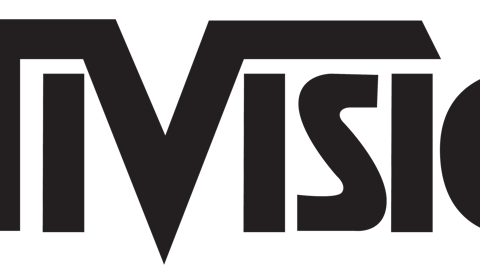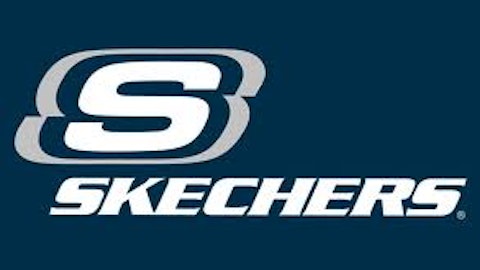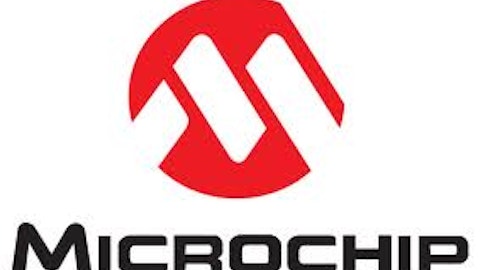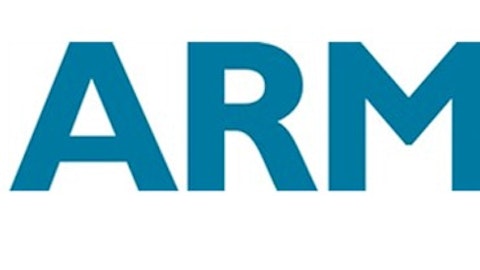One problem with using a simple P/E ratio as a measure of value is that it completely ignores the balance sheet. A company with a large amount of debt is certainly less attractive than a company with no debt, even if the P/E ratios and growth prospects are the same.
This can go the other way as well. A company that has a lot of net cash on the books is actually cheaper than the P/E ratio makes it appear. If you could buy the whole company at the current market price, your total cost would be reduced by the net cash, effectively lowering the price you pay. This makes the normal P/E ratio greatly inflated without an adjustment for cash.
Here are three examples of companies that have enough cash to significantly skew the P/E ratio.
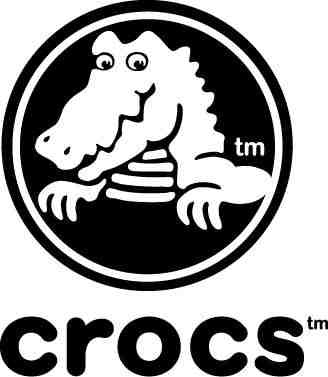
More than just clogs
The story of shoe company Crocs, Inc. (NASDAQ:CROX) is one that pops up time and time again. After its IPO at the beginning of 2006, the stock more than quadrupled on strong sales of its ubiquitous clogs and extreme optimism for the future. Reality quickly set in, with sales declining and the stock falling off a cliff. It seemed that a company that derived almost all of its sales from a single polarizing product wasn’t a great long-term investment at a nosebleed valuation.
Since this collapse, the company has greatly diversified itself. Crocs, Inc. (NASDAQ:CROX)’ revenue resumed growth in 2010 and surpassed its 2007 peak in 2011. The company is no longer a one-hit wonder, and there is a legitimate growth story developing.
This newfound success has led to a serious pile of cash on the company’s books. At the end of the most recent quarter, Crocs, Inc. (NASDAQ:CROX) had $289 million in cash and no debt, leading to $3.25 per share in net cash. With a stock price around $13.50 per share, this cash represents a full 24% of the total market capitalization.
Crocs, Inc. (NASDAQ:CROX)’ standard P/E ratio based on TTM earnings is 11.5, but factoring in the cash lowers this ratio to the bargain level of 8.75. I wrote about Crocs’ short-term issues in a previous article, and my conclusion was that earnings were likely being temporarily suppressed. The forward P/E ratio, including the effect of the cash, would then be even lower.
Video game juggernaut
Game company Activision Blizzard, Inc. (NASDAQ:ATVI) is responsible for two of the most successful video game franchises in history, Call of Duty and World of Warcraft. Call of Duty has become the de facto standard online shooter game, with the most recent iteration selling nearly 25 million copies since its release. The next version, Ghosts, is set to release this November.
World of Warcraft is a massively multiplayer online role playing game, or MMORPG, which users must pay a monthly subscription to access. With millions of active users worldwide, World of Warcraft is a cash cow for Activision Blizzard, Inc. (NASDAQ:ATVI), helping create a huge cash balance for the company. At the end of the most recent quarter, Activision had $4.55 billion in cash and no debt, leading to $4 per share in cash. With a stock price around $16.30, this cash represents about 25% of the company’s total market capitalization.
Based on TTM earnings, the P/E ratio for Activision Blizzard, Inc. (NASDAQ:ATVI) is 13.50, but factoring in the cash, this lowers this ratio to about 10.2. This seems low for a leading game company with two of the most successful franchises in history, leading me to believe that the market is expressing some pessimism.
There are a couple of legitimate concerns regarding Activision Blizzard, Inc. (NASDAQ:ATVI). First, with a new Call of Duty game being released every year, the possibility of franchise fatigue becomes a threat. Competitor Electronic Arts is gaining traction with its Battlefield franchise. If the new Call of Duty game doesn’t outsell the previous one this holiday season, it could lead to a perpetual decline of the franchise.
World of Warcraft’s age is another problem for Activision Blizzard, Inc. (NASDAQ:ATVI). Having launched in 2004, the game may be losing its luster, with subscriber numbers falling precipitously in the most recent quarter. With no successor yet announced and no guarantee that a new game will be anywhere near as successful, this cash cow could be drying up.
Given these threats, the price paid for Activision needs to be low, and the cash certainly helps. A $14 share price would put the company’s cash-adjusted P/E ratio at about 8, which seems reasonable given the prospect of earnings declines. The stock traded this low as recently as June, so it’s certainly within the realm of possibility.
Expanding in all directions
Graphics chip designer NVIDIA Corporation (NASDAQ:NVDA) is best known for its GPUs used for PC gaming. As the PC market has declined, NVIDIA stock has been unfairly punished, even as the gaming PC market continues to grow. I pointed this out in a previous article. NVIDIA’s core GPU business is strong, but the company is just starting to branch out into new businesses.
Tegra, the company’s mobile processor, is the biggest initiative. Although there have been struggles lately, the newest iteration of the chip, the Tegra 4, will start showing up in devices soon. With NVIDIA Corporation (NASDAQ:NVDA) launching the Shield, a handheld gaming device, and rumors of a NVIDIA tablet, it’s clear that the company is trying to become a leader in the mobile gaming market. Its success isn’t guaranteed, but there is real potential here.
The interesting thing about graphics cards is that they are essentially just a large number of processors optimized to perform the types of operations used in games and visualization applications. It turns out that there are other applications, ranging from scientific research to computational finance, which can be greatly accelerated if they are run on a GPU. The Tesla line of high-performance computing cards offers exactly that, although any modern GPU can serve the same purpose, albeit with lower performance. GPU computing is a growing market, and NVIDIA Corporation (NASDAQ:NVDA) is at the forefront.
At the end of the most recent quarter, NVIDIA Corporation (NASDAQ:NVDA) had $2.94 billion in cash and no debt. This works out to about $5 per share in cash, which is about 34% of the total market capitalization with the current stock price around $14.75 per share. The TTM P/E ratio is 16.4, but factoring in the cash, this number drops to just 10.8.
One thing to note is that NVIDIA Corporation (NASDAQ:NVDA)’s earnings are temporarily depressed due to current weakness in Tegra sales. Tegra sales should pick up in the second half and beyond as the Tegra 4 starts showing up in devices, so the true numbers may be even lower.
The bottom line
It’s important to consider the cash residing on companies’ balance sheets while researching investment opportunities. This cash has the ability to greatly alter common valuation metrics and make stocks far more attractive than they initially appear, as with all three of the companies above.
The article 3 Companies That Are Cheaper Than They Appear originally appeared on Fool.com and is written by Timothy Green.
Fool contributor Timothy Green owns shares of NVIDIA. The Motley Fool recommends Activision Blizzard (NASDAQ:ATVI) and NVIDIA. The Motley Fool owns shares of Activision Blizzard and Crocs.
Copyright © 1995 – 2013 The Motley Fool, LLC. All rights reserved. The Motley Fool has a disclosure policy.

